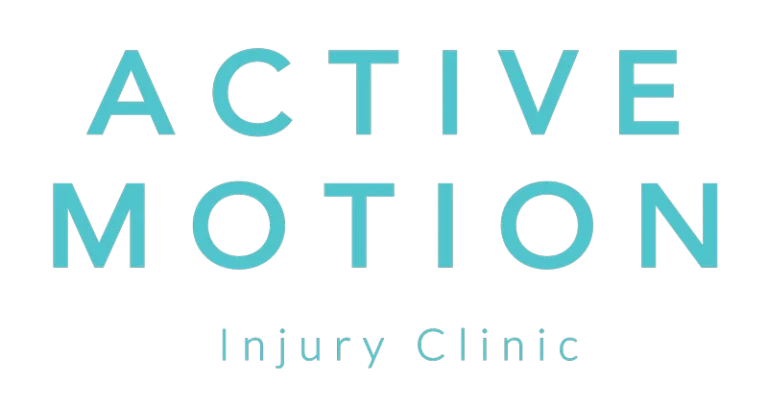
Understanding Diabetic Neuropathy: Causes, Symptoms, and What You Can Do About It
For runners, gym-goers, swimmers, climbers, or weekend warriors—your shoulders are essential. They’re not just for throwing a ball or lifting a weight overhead. They stabilize your arm when running, control your push-up form, and help you carry, swing, lift, and climb. So when shoulder pain enters the picture, it doesn’t just hurt—it disrupts your rhythm, your strength, and your confidence.
If you’re an active individual dealing with shoulder discomfort, you’re not alone—and you don’t need to let it sideline you.
In this blog, we’ll explore:
-
Why active people are prone to shoulder pain
-
Common culprits behind the discomfort
-
Warning signs it’s time to act
-
Exercises and strategies that support recovery
-
How to move forward without sacrificing your lifestyle
Why Active People Get Shoulder Pain
Your shoulder is one of the most mobile joints in your body—and with mobility comes vulnerability. It’s supported by a delicate balance of muscles, ligaments, and tendons, all of which need to work in harmony. For active individuals, this system is constantly put to the test.
Here’s why shoulder pain can sneak up on the active population:
-
Overuse: Repeating the same motion (like swinging a racquet, doing pull-ups, or swimming laps) without enough rest or variation.
-
Under-recovery: Training without adequate mobility work, sleep, or tissue care.
-
Compensations: Weakness or tightness elsewhere in the body (e.g., thoracic spine, core, or hips) forces the shoulder to overwork.
-
Poor movement habits: Even strong, fit people can develop faulty movement patterns—like shrugging the shoulders during lifts, or poor scapular control during rows.
Being active doesn’t mean being immune to injury—in fact, sometimes it increases the risk if balance and recovery aren’t prioritised.
The 4 Most Common Shoulder Injuries in Active Adults
-
Rotator Cuff Strain or Tendinopathy
-
Repeated overhead activity (like throwing, pressing, or swimming) can inflame or tear these stabilising muscles.
-
-
Shoulder Impingement
-
When tendons or bursae get compressed during motion, it creates a pinching sensation, especially during lifting or reaching.
-
-
Labral Tears
-
The labrum is the ring of cartilage that helps stabilise your shoulder joint. Tears can occur with forceful overhead movements or heavy lifting.
-
-
Postural Overload
-
Modern life still creeps in. Slouched desk posture or long hours driving can round the shoulders and place them in a weak position—even for the fittest bodies.
-
Signs You Shouldn’t Ignore
As someone used to pushing through discomfort, you might be tempted to “wait it out” or chalk it up to tightness. But certain signs are your body’s way of waving a red flag.
Watch out for:
-
A dull ache that lingers post-exercise or at rest
-
Pinching during overhead or pushing movements
-
Weakness in lifting objects or pushing off the ground
-
Limited mobility (struggling to reach behind your back or overhead)
-
Pain that disrupts sleep, especially when lying on the affected side
These are indicators that the problem may not resolve on its own—and waiting may make it worse.
The Good News: You Can Stay Active While Healing
Contrary to popular belief, the answer isn’t always total rest. In fact, completely avoiding movement can lead to further weakness and stiffness. The key is modifying movement—not eliminating it.
Here’s what smart recovery looks like:
-
Reducing aggravating movements temporarily (e.g., replacing barbell presses with floor presses or isometrics)
-
Incorporating low-load mobility work to restore range
-
Strengthening the shoulder support system with focused rehab
Below are 5 simple strategies you can begin using right away.
5 Movement-Based Strategies to Support Your Shoulder
1. Scapular Wall Slides
This is a posture-correcting move that also builds scapular control—critical for pain-free overhead motion.
How to do it:
-
Stand with your back flat against a wall, arms bent at 90 degrees.
-
Slowly slide your arms up and down the wall like goalposts.
-
Keep your shoulder blades engaged and ribs down.
Do: 2 sets of 10 reps, daily.
2. Sleeper Stretch
If tight posterior tissues are part of the issue, this gentle stretch helps restore internal rotation.
How to do it:
-
Lie on your side, affected arm on the floor at shoulder height.
-
Use your opposite hand to gently push your forearm toward the floor.
-
Hold for 30 seconds, repeat 2–3 times.
Tip: Stop if this reproduces a pinching sensation.
3. Band Pull-Aparts
A great activation move to strengthen the upper back and balance pressing movements.
How to do it:
-
Hold a resistance band in both hands at shoulder height.
-
Pull the band apart with straight arms, squeezing the shoulder blades.
-
Return slowly.
Do: 3 sets of 15 reps, especially pre-workout.
4. Serratus Wall Slides with Foam Roller
This one targets a commonly undertrained muscle (serratus anterior) that stabilises the shoulder blade.
How to do it:
-
Place a foam roller on the wall with your forearms resting against it.
-
Slide the roller up the wall while keeping light pressure through your arms.
-
Control the return.
Do: 2 sets of 10 slow reps.
5. Farmer’s Carries (Pain-Free Range)
Carries teach your shoulder how to stabilise under load—without overhead pressure.
How to do it:
-
Hold a dumbbell or kettlebell at your side.
-
Walk slowly for 30–60 seconds, keeping your shoulder down and back.
-
Switch sides.
Progress: Increase the weight gradually—but only if there’s no pain.
Training Modifications to Try While Recovering
Your regular workout doesn’t have to come to a halt. Simply tweak it to reduce irritation while still building strength.
Instead of:
-
Overhead presses → Try landmine presses or push-ups
-
Pull-ups → Try banded rows or isometric holds
-
Kettlebell swings → Swap for loaded carries or squats
-
Upright rows → Replace with dumbbell lateral raises
Key: Avoid forcing range or pushing through pain. Mild fatigue is good—sharp, catching pain is not.
When to Seek Expert Help
Even with all the right knowledge and exercises, sometimes progress stalls. That’s when a tailored approach makes all the difference.
Consider working with a specialist if:
-
Pain persists for more than 2–3 weeks despite modification
-
You’ve lost range of motion or strength
-
Discomfort is spreading down your arm or into your neck
-
Your training is suffering and you’re unsure what’s safe to do
A movement-focused professional (like a physical therapist) can assess your posture, strength, and habits to identify the root of the issue—not just treat the symptom.
Your Next Step: Move Better, Feel Better
Shoulder pain doesn’t have to be the end of your activity. In fact, for many active individuals, it’s a sign to pause, reset, and train smarter—not harder.
A few weeks of focused mobility and strength work can pay off with better posture, more controlled movement, and longer-lasting strength gains.
Click here to schedule your free Discovery Visit. It could be the most important step you take this year.
More free resources:
Read our blog: 5 Simple Movements to Ease Back Stiffness and Improve Mobility – Active Motion
Book a Free Telephone Consultation: Request A Call Back – Active Motion
Learn more about our amazing team: Team – Active Motion Injury Clinic
Request A Call Back
If you'd like to get more information or discuss your condition with a professional, use the form to register for your FREE call back.
Free Consultation
Schedule your free consultation so we can learn more about your pain and how we can fix it.
Find Out Cost & Availability
Enquire about the pricing and availability of our services.
